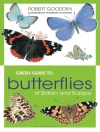Biological control is an important component of integrated and ecological pest management programmes. Its importance continues to increase as plant protection is challenged with climate change, invasive species, pesticide resistance, de-registration of pesticide active ingredients, and increasing consumer demands for sustainably produced food and fibre. Biological control is highly compatible with organic cropping systems and evolving pest management frameworks, including biovigilance. Canada continues to be a world leader in biological control research, development of biological control policy, and implementation of biological control programmes.
This is the sixth volume of a series of books reporting on the status of biological control research and on biological control programmes employed in Canada. This volume features 58 case study chapters that describe the research and progress in implementation of biological control for pests including insects, mites, weeds, and plant pathogens. Topics important to biological control, including policy, emerging technologies, biological control in urban landscapes and future targets for biological control are reviewed. Although the volume focusses on the Canadian biological control experience, the chapters will be of interest to a global audience of researchers and students of biological control, risk assessment, ecology, and pest management.
This book
Offers a detailed analysis of the state-of-the-art of biological control in Canada.
Explains how biological control research is responding to challenges including climate change and invasive alien species.
Gives insights in effective risk assessment and pest management.
It is a valuable resource for students and researchers of pest management and biological control, and for practitioners and policy-makers needing analysis of the practical implications of using this approach.
Зміст
1. Successes and failures of biological control in Canada
2. Regulation of biological control in Canada
3. The impact of climate change on biological control:
4. New tools supporting biological control programmes: the use of UAS:
5. Biological control in urban ecosystems:
6. The influence of pesticide resistance on biological control programmes:
7. Future targets for biological control in Canada:
Case studies
Acalymma vittatum Striped cucumber beetle
Acrolepiopsis assectella Leek moth
Anthonomus eugenii Pepper weevil
Anthonomus rubi Strawberry blossom weevil
Aphids in greenhouses Foxglove, GPA, potato, melon, pea aphids
Aphis glycines soybean aphid
Cephus cinctus wheat stem sawfly
Ceutorhynchus obstrictus Cabbage seedpod weevil
Contarina nasturtii Swede midge
Delia antiqua Onion maggot
Drosophilia suzukii Spotted wing drosophila
Greenhouse mites TSSM, cyclamen, tomato russet mites
Greenhouse thrips WFT, OT, echinothrips, chilli thrips
Greenhouse whiteflies Trialeurodes and Bemisia spp.
Halyomorpha halys Brown marmorated stinkbug
Hypera postica alfalfa weevil
Liliocerus lilii lily leaf beetle
Listronotus oregonensis Carrot weevil
Lygus spp. Lygus plant bugs
Mamestra configurata bertha armyworm
Ostrinia nubilalis European corn borer
Oulema melanopus Cereal leaf beetle
Phytonemus pallidus Cyclamen mite
Plutella xyllostella Diamondback moth
Popillia japonica Japanese beetle
Cutworm pest complex Several species
Wireworms Several species
Sitodiplosis mosellana Wheat midge
Sitona lineatus pea leaf weevil
Trichoplusia ni Cabbage looper
Varroa destructor Adelges tsugae hemlocky woolly adelgid
Agrilus plannipennis Emerald ash borer
Choristoneura fumiferana Eastern spruce budworm
Dasineura mali Apple leafcurling midge
Hoplocampa testudinea Apple sawfly
Rhopobota naevana blackheaded fireworm
Synanthedon myopaeformis Apple clearwing moth
Phytophthora infestans potato late blight
Phytophthora ramorum
Ailanthus altissima Tree of heaven
Alliaria petiolata Garlic mustard
Centaurea maculosa and C. diffusa Spotted and diffuse knapweed
Cirsium arvense Canada Thistle
Elaeagnus angustifolia Russian olive
Fallopia japonica, F. sachalinensis, and F. x bohemica Japanese, giant, and bohemian knotweed
Lepidium draba, L. chalepense, and L. appelianum Hoary cresses
Leucanthemum vulgare oxeye daisy
Linaria spp. Dalmatian and Yellow toadflax
Myriophyllum aquaticum Parrot’s feather watermillfoil
Phragmites spp. Perennial reed grasses
Pilosella spp. Hawkweeds
Rhaponticum repens Russian knapweed
Senecio jacobaea tansy ragwort
Tanacetum vulgare common tansy
Vincetoxicum nigrum and V. rossicum Black swallowwort and dog-strangling vine
Taxonomic index
Про автора
Dr Martel has a M.Sc. (2003) and a Ph.D. (2007) in entomology from Mc Gill University in collaboration with Agriculture and Agri-Food Canada (AAFC). After graduating, she went to Europe for two postdocs positions, first in Sweden (2007-09) and then in France (2009-11). She started as a research scientist for Natural Resources Canada in 2011, where she works on forest insect pests (such as spruce budworm and emerald ash borer) and their natural enemies. Her work has been recognized through nine awards from the Entomological Societies of Québec and Canada as well as the Federal Government, including awards for her work in support of women in science and bilingualism for minority communities. She authored 37 peer-reviewed publications, 2 book chapters and 51 reports or non peer-reviewed publications. She has been an invited speaker for more than 50 conferences, both international and national, and gave 30 regular talks, in addition to the more than 100 conference talks on which she is a co-author. She has supervised or co-supervised 19 graduate students and 12 undergrads from four countries, in addition to being involved in different roles in the committees of 22 graduate students. She is actively involved in different societies, including the Entomological Societies of Québec, Canada and America. Finally, she is frequently contacted by reporters for her expertise, which led to more than 50 media interviews for newspaper, radio, television, podcast or online medias. Her training with AAFC combined with her current position with CFS gives her a global understanding of biological control in both agriculture and forestry.












